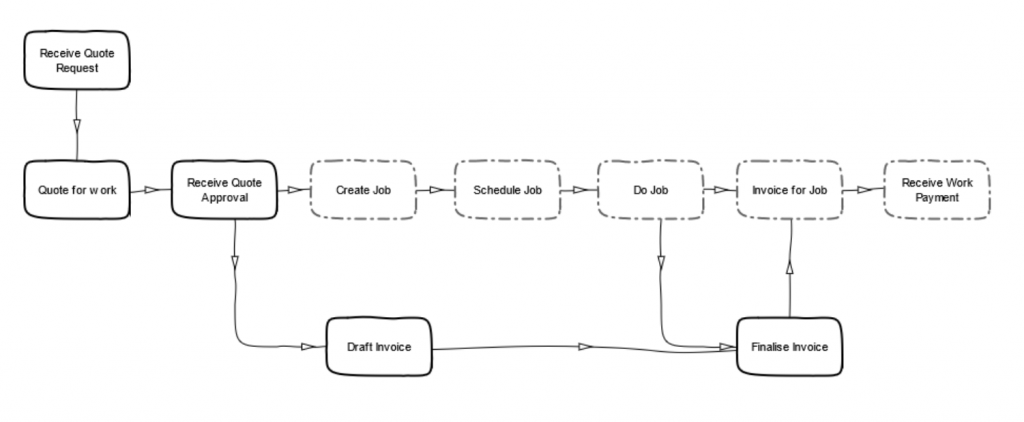I find it helps to think of the whole process as a river. The straightforward case is the main, well-worn channel, but there may be parts that break off and loop round before coming back into the main flow.
So, for example, your straightforward case for preparing a set of annual accounts for a client assumes you have all the information already, the client approves your draft immediately and you can go straight on to filing them. But what happens if you don’t have all the information? Or the client doesn’t bother to get back to you with approval? The process needs to deal with these too. These are alternative routes through the process – loops in your process river if you like. And that’s exactly how I like to represent them.
Here’s another example. For a maintenance business, the ‘straightforward’ case is the typical reactive, unscheduled job:

The business gets a request, does the job, invoices for whatever it took at the end, and hopefully not too long afterwards, gets paid.
For many businesses of this kind, a scheduled job, where you quote first, and get your invoice approved (possibly following some adjustment for unforeseen expenses) is the exception:

Put them together, and you can see they are simply alternative routes through the same process.
Which one of these you choose as your straightforward case and which as your exception is entirely up to you – it depends on how you want to run your business. The main thing is to make things clear for the person following the process.
Next time, we’ll take a look at what happens inside a bubble.